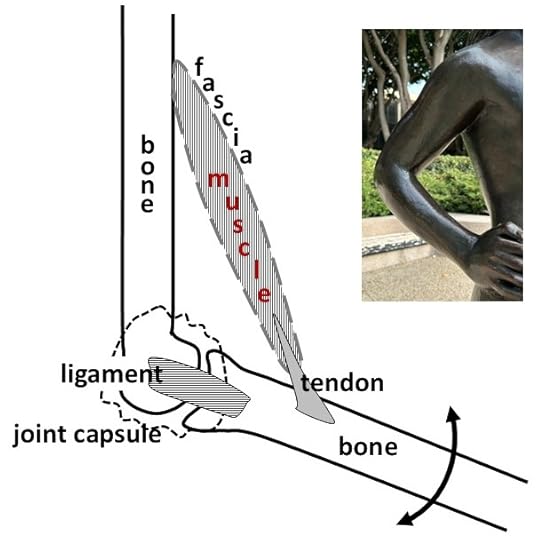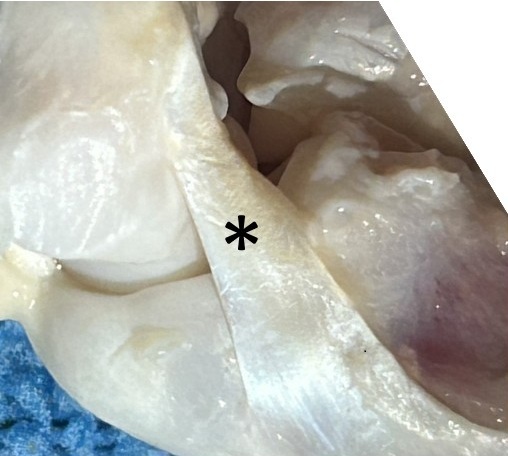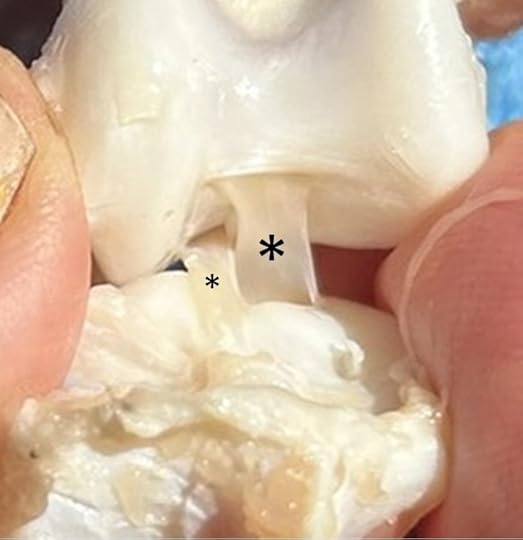What do ligaments look like, anyway?
Ligaments hardly get any respect. By comparison, bones in natural history museums and on X-rays are fascinating. We can also marvel at dissembled ones on otherwise empty dinner plates. Muscles, too, get their due. Since they are just under the skin, we have a sense of their shape, can feel them contact and relax, and note the effects of conditioning and overexertion. Artists have sculpted bulging muscles in bronze and stone figures for thousands of years as expressions of might. Nobody has ever done the same for ligaments.
Without ligaments, however, each of us would be a bag of bones and muscles flopping about without achievement. Consider too that muscle and bone together constitute over half of our body’s weight. Ligaments, by contrast, would hardly tip the scale at all. In spite of their importance, most people (surgeons, meat cutters, and hunters excepted) have never seen a ligament in its natural state, partly because others have fewer opportunities and are less inclined to be poking around, and heating ligaments in the kitchen turns them to mush.
For clarification, ligaments are the tough, fibrous bands that connect bones together. In humans, except for three that run the length of the spine, none are longer than several inches, and many are much shorter. Only occasionally are they thicker than a shoestring, and in the fingers, they are about that wide, whereas at the hip and knee they are much wider and thicker. The gaps that ligaments span between bones are, of course, joints, and ligaments control each joint’s motion.

Ligaments resist stretch and appear microscopically much like tendons; and both, aptly described as connective tissues, cross joints. The elemental difference between the two is that ligaments connect bones together whereas tendons join muscles to bones.
To enhance your appreciation of ligaments, I dissected a fresh chicken. Your ligaments look identical, just larger.

The asterisk identifies the strong ligament on the side of the elbow closest to the trunk–the medial collateral ligament. It resists side-to-side deviation of the elbow and is the cause of many baseball pitchers’ disability. (I will discuss this ailment and its treatment later.)

The asterisks mark the cruciate ligaments, which are located inside the knee. The smaller asterisk identifies the anterior cruciate ligament (ACL), which is prone to tear with twisting injuries. (Details later.)
This vexation also affects dogs. I am not certain about chickens.
Status of book, Ligaments, Appreciating the Bands That Bind Us
February, 2024: Publishing agreement signed with Johns Hopkins University Press
February, 2025: Completed manuscript submitted to JHUP. JHUP sends manuscript out for peer review.
April 4, 2025: Both peer reviews entirely favorable. Several images modified to improve clarity, returned to JHUP April 5, 2025 for the book to “go into production.”
Launch date anticipated for early 2026. Stay tuned for details.
The post What do ligaments look like, anyway? appeared first on MuscleAndBone.Info.



